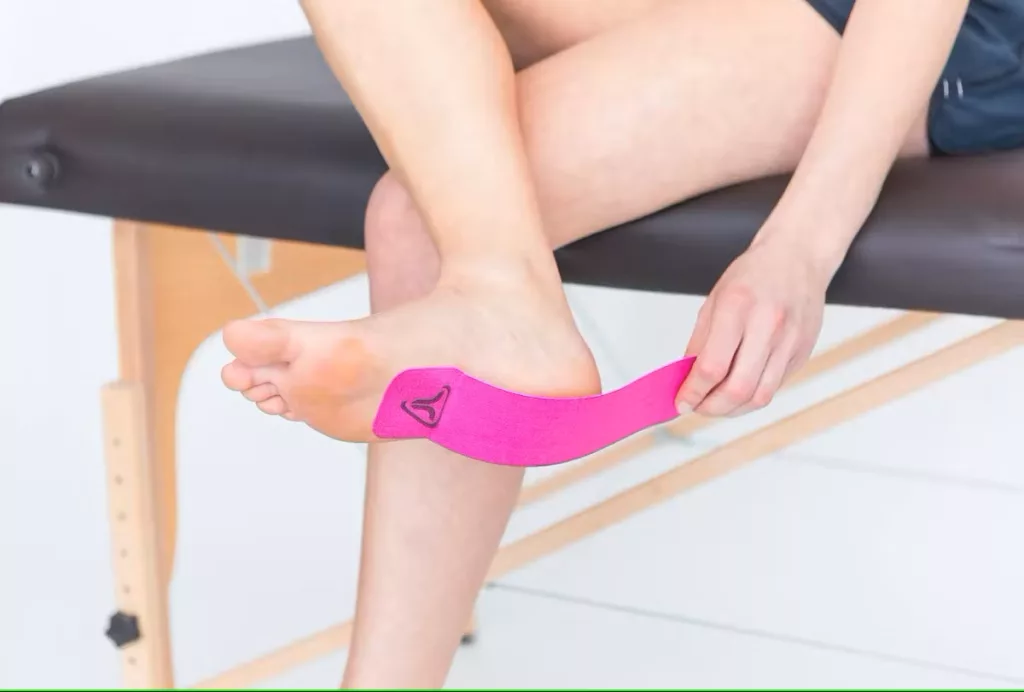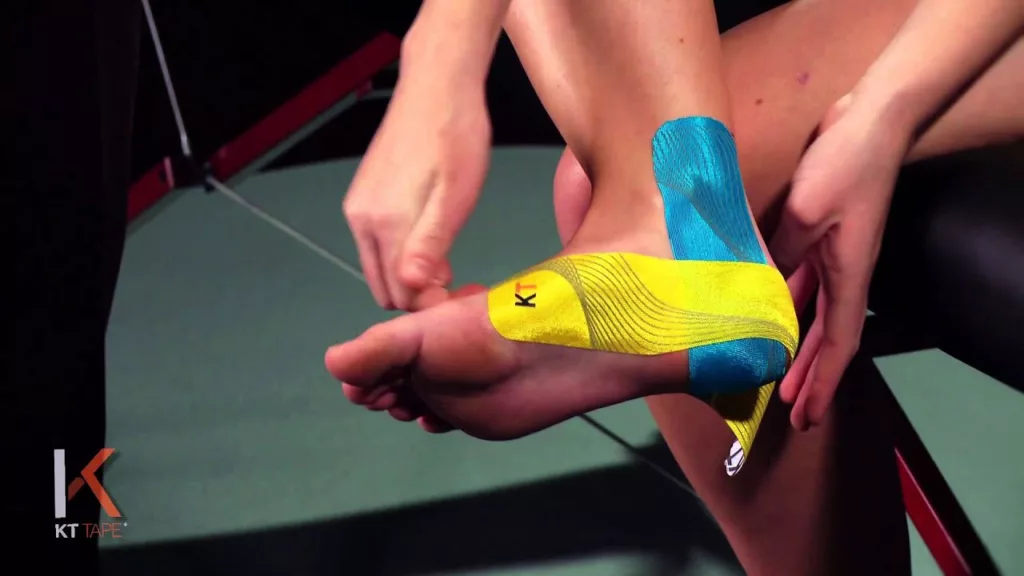Achilles tendonitis can be a frustrating and painful issue for many athletes, particularly runners and cyclists. This article aims to address how KT Tape, a therapeutic kinesiology tape, can be an effective tool in managing and potentially alleviating the discomfort associated with this condition. We’ll answer common questions about how KT Tape works, its application techniques for Achilles tendonitis, and what you can expect in terms of relief and support. Whether you’re a seasoned athlete or a weekend warrior, understanding how to use KT Tape could be a game-changer in your approach to tackling Achilles tendonitis.
Table of Contents
Toggle1. What is Achilles Tendonitis and how can KT tape help?
Achilles tendonitis is a common condition that causes pain along the back of the leg near the heel. The Achilles tendon is the largest tendon in the body. It connects your calf muscles to your heel bone and is used when you cycle, walk, run, and jump. Kinesiology Therapeutic (KT) tape is a strong, elastic athletic tape that reduces muscle pain, increases mobility, and enhances athletic performance. It provides relief and support for muscles and joints and can be used to prevent or treat hundreds of sports injuries.
KT tape works by lifting the skin away from the muscles, which helps increase blood flow. Increased blood flow can help reduce swelling, inflammation, and pain. It can be particularly effective for managing pain associated with Achilles tendonitis. The tape is applied in a specific pattern around the heel and up the back of the leg, providing support to the Achilles tendon.
KT tape can be worn during any physical activity, providing support and stability to the injured tendon. It’s also waterproof, so it can be worn in the shower or while swimming. The tape is also designed to be worn for several days at a time, providing continuous support and pain relief.
It’s important to note that while KT tape can provide relief from the symptoms of Achilles tendonitis, it should not be used as a standalone treatment. It’s best used in conjunction with other treatments such as physiotherapy, rest, and medication.
2. How do I apply KT tape for Achilles Tendonitis?
Applying tape for Achilles tendonitis involves a specific technique to ensure the tape provides maximum support and relief. Before applying the tape, make sure the skin is clean and dry. If the skin is hairy, you may need to shave it to ensure the tape sticks properly.
Start by cutting a piece of KT tape about the length of your lower leg. This will be the anchor piece. Apply the anchor piece along the bottom of your foot and up the back of your leg, following the line of the Achilles tendon. Make sure the tape is stretched slightly as you apply it.
Next, cut two shorter pieces of tape. These will be applied perpendicular to the anchor piece, wrapping around the back of the heel. Start by applying one end of the tape to the anchor piece near the heel, then wrap the tape around the heel and attach the other end to the anchor piece on the other side.
Repeat this process with the second piece of tape, but apply it slightly higher up the leg. The two pieces of tape should form an X shape at the back of the heel.
Finally, rub the tape vigorously to activate the adhesive. The heat generated by the friction will help the tape stick to the skin.

3. Can I wear KT tape all day?
Yes, KT tape is designed to be worn all day and for several days at a time. The adhesive is strong enough to withstand daily activities, workouts, and even showers. However, it’s important to monitor the taped area for any signs of irritation or discomfort. If the tape begins to peel off, it’s time to replace it.
Wearing KT tape continuously can provide ongoing support to the Achilles tendon, helping to reduce pain and inflammation. It can also help improve mobility and function in the affected leg.
However, while it can be worn all day, it’s important to give your skin a break in between applications. After wearing the tape for a few days, remove it and let your skin breathe for at least one day before applying a new piece of tape.
4. Can KT tape be used during sports activities?
Absolutely, KT tape is designed to be worn during physical activities, including sports like cycling. The tape provides support and stability to the injured tendon, which can help improve performance and reduce the risk of further injury. It’s also water-resistant, so it can be worn during water sports or in the rain.
However, it’s important to remember that while KT tape can help manage the symptoms of Achilles tendonitis, it doesn’t cure the condition. It’s important to continue with other treatments such as physiotherapy and rest, even while using KT tape.

5. How long does it take for KT tape to work?
The effects of KT tape can be felt almost immediately after application. The tape lifts the skin away from the underlying tissues, which helps increase blood flow to the area. This can help reduce pain and inflammation quickly.
However, the long-term effects of KT tape, such as improved mobility and function, may take a few days or weeks to become apparent. It’s important to continue using the tape as directed, even if you don’t notice immediate improvements.
Remember, KT tape is not a cure for Achilles tendonitis. It’s a tool that can help manage the symptoms of the condition and improve your quality of life while you recover. It’s important to continue with other treatments, such as physiotherapy and medication, even while using the tape.
6. Are there any side effects of using KT tape?
KT tape is generally safe to use and side effects are rare. However, some people may experience skin irritation or allergic reactions to the adhesive. If you notice any redness, itching, or swelling after applying the tape, remove it immediately and consult a healthcare professional.
It’s also possible to apply the tape too tightly, which can restrict blood flow and cause discomfort. If you feel any numbness, tingling, or increased pain after applying the tape, remove it and reapply it more loosely.
Remember, it is not a substitute for professional medical advice. If you’re unsure about how to use the tape properly, or if your symptoms persist or worsen, it’s important to seek advice from a healthcare professional.






